
What is notebooking? Find out here. We love notebooking and we use it often here.
Let’s talk about how to teach the skill of notebooking, and how to implement the discipline in your home.
How to Notebook with Kids
Starting Out With Notebooking
We started notebooking when my youngest kids were in 1st and 2nd grade, using the pre-made Apologia Exploring Creation Elementary Science series.
It was a new idea for us, and I sort of stumbled my way through without doing a lot of research on the subject. I knew I was vehemently opposed to worksheets, that I wanted a creative and fun way to school, and that I wanted my children to graduate with higher level cognitive skills, excellent writing and research techniques, and a love of learning. I wanted to use classical methods to school, yet to unleash them from rote techniques.
Enter notebooking.

How to Notebook with Young Kids
Starting out with notebooking, we found it really helpful to use fun, engaging pages with lots of room for drawings and interesting-looking writing spaces. The writing lines were also a big help, as our kids were still really learning how to form letters and sentences.
- To begin, we all sat around the table, the boys with their notebooks and colored pencils, and me with the Apologia textbook, or from the Bible.
- I read to them from a subsection, and then the boys took turns telling me what they’d learned.
- When we first started, we only read a paragraph at a time; that subsection expanded significantly as the boys learned to listen.
- After they verbally narrated what they’d learned, the boys would write a sentence summing up something they’d heard. Sometimes what they wrote was important information, sometimes it was something like “Slugs are gross”. I let them have a lot of leeway.
- If they weren’t able to formulate a sentence on their own, them I coached them. The boys would then draw a diagram or picture to represent what we’d read. At that point, I’d read another paragraph.
We worked through our notebooks slowly at first, and it was a good practice in patience for me. Sometimes we’d take our notebooking outside, where we’d measure out and draw a humpback whale in the street with sidewalk chalk, then take a picture (with the boys inside the whale of course!) and we’d paste the printed picture into our notebooks.
Notebooking in the early grades made learning fun, memorable, and the boys progressed quickly in their cognitive and developmental writing abilities.
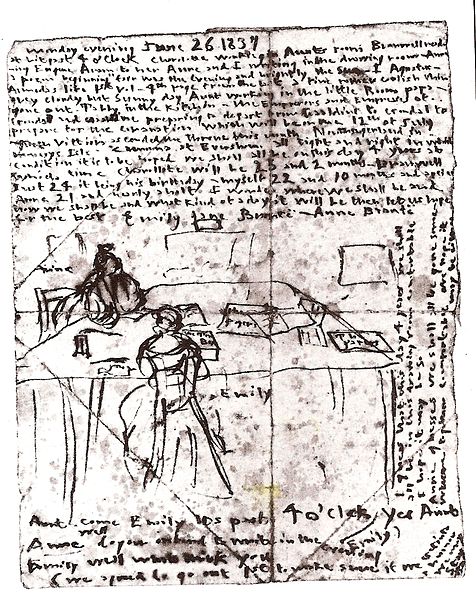
Emily Bronte’s Notebook
(Illustration: Emily Bronte, 1837, Public Domain)

How to Notebook with Older Elementary Kids
- As the boys developed in their notebooking skills, I would read aloud an entire section of material while they worked with their colored pencils, then allow them time to narrate what they’d learned in their notebooks.
- They each developed their own writing voice as they worked.
- They would read their work back to me and we’d discuss what they’d said.
Because we started notebooking in science, my boys frequently asked for spelling help. However, I rarely corrected their spelling.
I did always remind them to use their best handwriting. There were days when one of my children was definitely not doing that. However, I really believed that if he had the space to develop cognitively, the developmental practice of handwriting would follow. Switching to cursive helped his handwriting a lot, and I believe that the muscle development and memory that came from the process of handwriting also really helped. I’m glad I bit my tongue, friend.

How to Notebook in Middle and High School
My boys are now in high school, headed toward college. I am so grateful for the time and effort we’ve put into learning to notebook and into using it in our home!
We’re now able to creatively apply notebooking to a number of subjects, and I’ve increasingly been able to help the boys pursue electives and topics of interest using materials I choose, rather than searching for a curriculum that doesn’t quite exist.
For instance, several years ago, we started theology and spent the year studying the Doctrine of the Bible. I can tell you that it was a wonderful thing for us to read aloud appropriate materials, discuss them, and then to allow my kids to notebook about what they’ve learned.
Through middle and high school, we’ve used Bible Road Trip™ Notebook Journals and Cobblestone Path™ Church History Research Journals.
I’ve had a wonderful time helping my kids study the Bible and Christian history in a laid-back manner.
My boys truly feel like they’re at the wheel of their education. (OK, sometimes they’d rather be skateboarding or playing basketball, but they’ve developed a love for learning, and they’re really great writers. In fact, both have been published several times in international magazines.)
How to Notebook (and What is Notebooking?)
Notebooking Resources for Your Kids!
Bible Road Trip™ Year One Notebooking JournalsBuy HereBible Road Trip™ Year Two Notebooking JournalsBuy HereBible Road Trip™ Year Three Notebooking JournalsBuy HereMy Timeline NotebookBuy HereMy Book LogBuy HereMy Field Trip and Travel JournalBuy HereMy Sermon NotebookBuy HereCobblestone Path™ Church History Research JournalsBuy Here
Homeschool Notebooking Works for Many Subjects
We use notebooks for pretty much everything. I don’t think that’s necessarily a great idea at the start. Do you remember being in elementary school, and your hand would literally ache? It takes time to develop the skills and musculature for writing.
By the middle and high school years, we used notebooks (blank and structured notebooking pages) as follows:
- Art ~ We use notebooks to sketch, mix colors, experiment with techniques, and notebook about famous artists.
- Music ~ We are incorporated composers and hymns into our history and notebooked about that.
- Math ~ We have been using a literature-based math program, Life of Fred, for a number of years now and we love it. The boys notebook important concepts and then work through the few problems.
- Science ~ We have used some wonderful Christian homeschool science resources. The boys notebook through it all. One of them notebooked an independent project in quantum mechanics…I don’t even know what to say about that.
- Geography ~ Notebooking is a fabulous way to record maps, concepts, demographics, and prayer needs for states, countries, and geographical boundaries. One of my boys does his geography notebooking on the computer so he can use Google Earth and Wikipedia, copying and pasting the maps and photos.
- History ~ Notebooking is a great way to work through history! Check out the timeline notebooking journal in the resources below.
- Christian history ~ I’m so excited about Cobblestone Path™! I hope you’ll join us.
- Bible ~ Notebooking is perfect for Bible study! Check out the Bible Road Trip™ journals. Notebooking can also help with Scripture memorization. I’m notebooking/copyworking my way through Romans right now.
- Languages ~ Notebooking is also a great technique for learning vocabulary, declensions, conjugations, and more.
Leonardo DaVinci’s Notebook
(Illustration: Paris Manuscript F, Folio 18V and 19R, Leonardo da Vinci, 1508, Public Domain)
William Blake’s Notebook
(Illustration: William Blake (1757-1827), Public Domain)
Books Make Great Gifts!
Teach Your Kids the Bible with Bible Road Trip™

Bible Road Trip™ is a three-year Bible survey curriculum. Take your family through the Bible five times from preschool to high school.
To help you get the most out of your studies, Bible Road Trip™ has an array of coordinating weekly activities:
- Researching the section of the Bible you’re studying
- Reading and discussing the Bible
- Memorizing Scripture
- Notebooking about your studies
- Praying for the nations
- Suggestions for further study
- Crafting about what you’ve learned
- For your older students: A project to share what they’ve learned
- Bible Road Trip™ also has some great tools you can use along with it, such as:
- Notebooking Journals for grades 1-9. Want a structured notebooking journal for high school? Don’t hesitate to use the Dialectic journal (grades 7-9).
- Bible Memory Card Sets for all five levels of study, preschool to high school. These are available in both ESV and KJV.
Grab your Bible Road Trip™ Year One Sample Pack. You’ll get:
- The Bible Road Trip™ Parent / Teacher Guide.
- The first three weeks of the curriculum for all five learning levels. Week Three is where we really dive into the Bible and begin to our systematic study. Week Three will give you a good feel for the rest of the curriculum.
- The first three weeks of the Bible Memory Card sets for all five levels, in ESV and KJV.
- The first three weeks of each of the three leveled Notebooking Journals.
Grab the Sample Pack for FREE:

Disciple your kids by taking your family through the Bible together in a meaningful way!

Bible Road Trip™ Curriculum
Take a look inside the Bible Road Trip™ curriculum! Let me show you around:
Bible Resources for Your Kids
Learn More HereLearn More HereLearn More HereLearn More HereLearn More HereLearn More Here
More Thinking Kids Posts You’ll Love

Join the newsletter
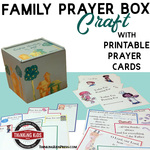
Get the Family Prayer Box Project FREE!
Teach your children to pray with this fun project that includes 7 printable sets!









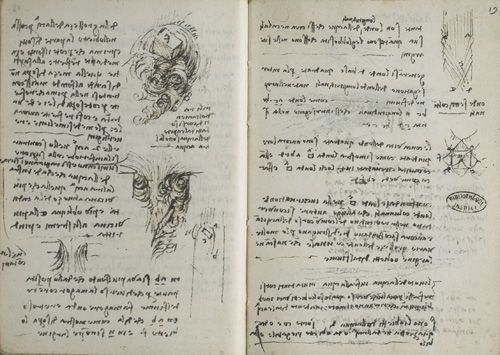
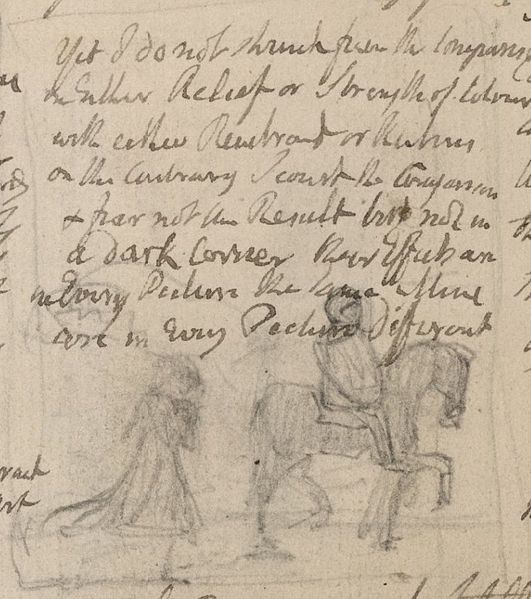


















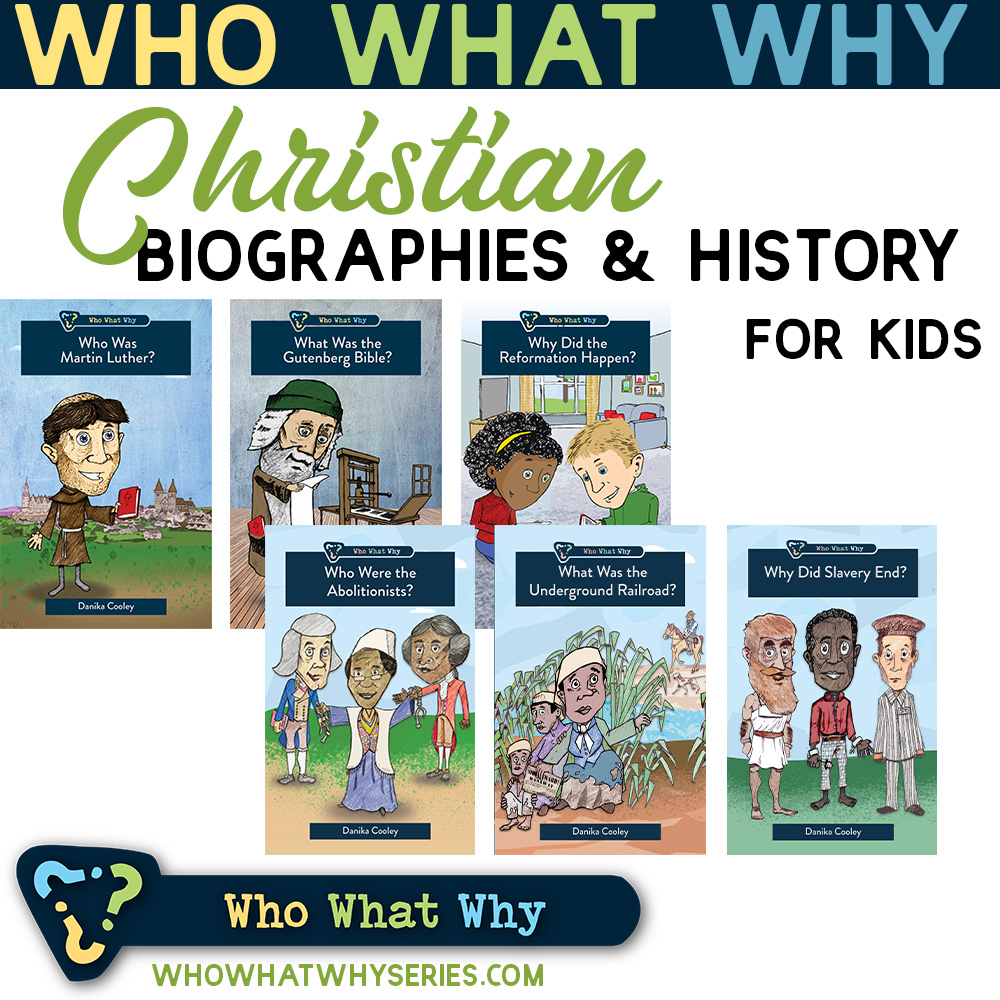
































































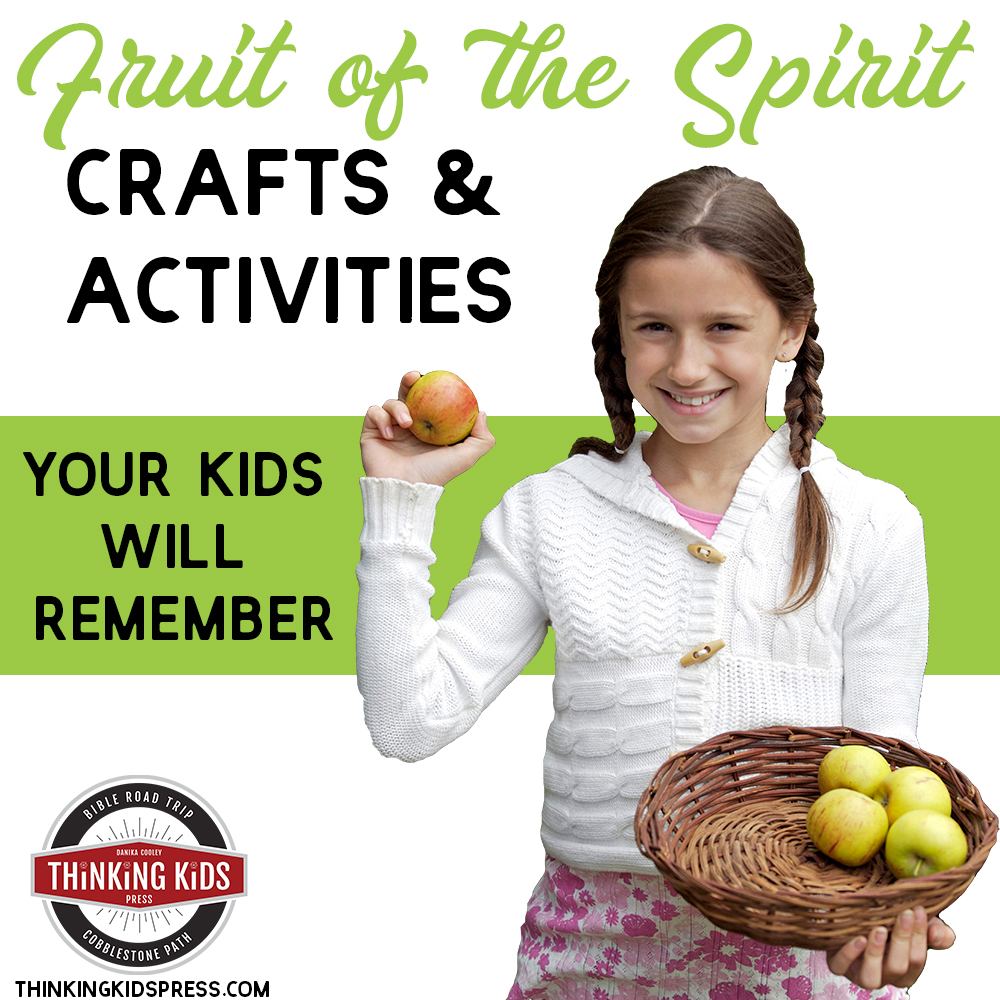
















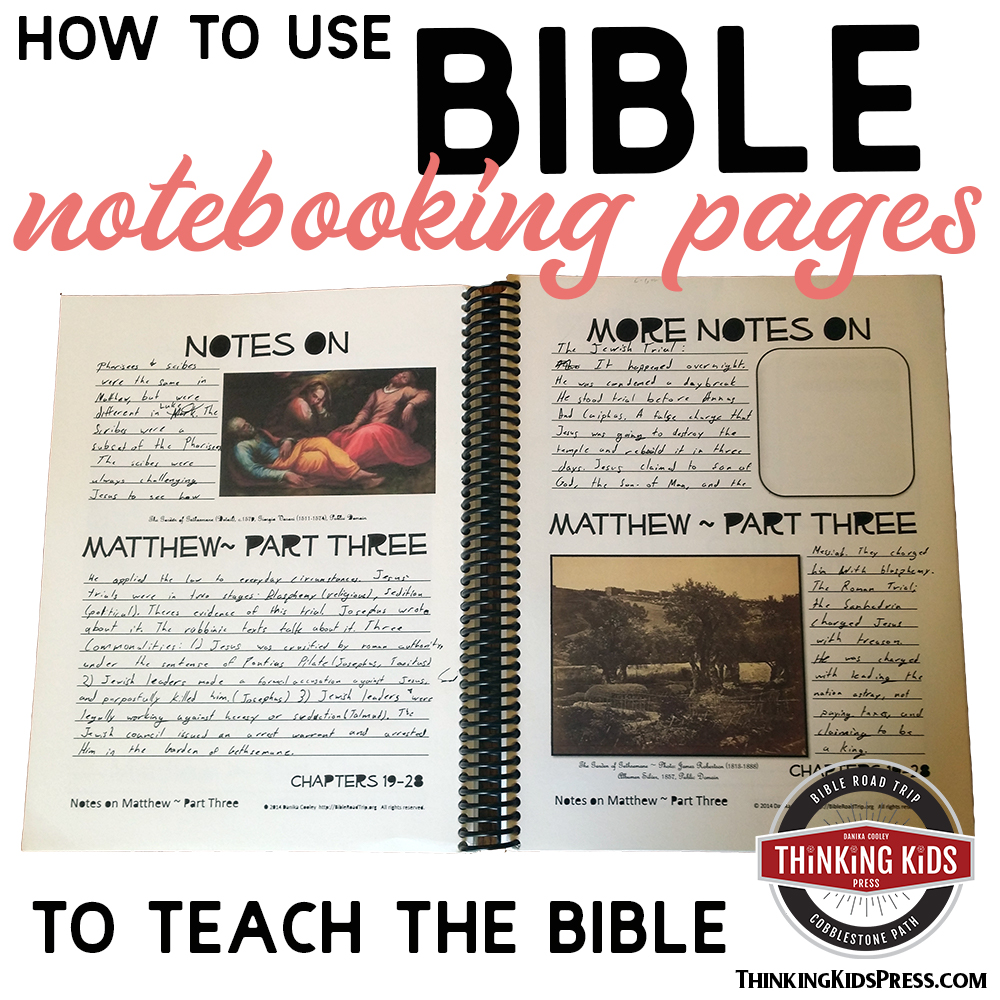





















































“I really believed that if he had the space to develop cognitively, the developmental practice of handwriting would follow.” – I love this line! We are about to begin our homeschooling journey, and I appreciate your specifics on notebooking, like what kind of paper to use and duplex printing – serious questions in my mind recently! It’s great to get a picture of how notebooking can work over the years, especially what to expect in the younger grades. Thank you!
You are so welcome. Thank you for letting me know so specifically what is helpful to you!
How do you know ahead of time how many pages to bind together? Or do you collect your pages as they complete them, and then take them to be bound? I would love to start notebooking with my daughter, and we just won a life membership to the notebooking pages (yea!) so we have that as a wonderful resource. But I am still sort of bewildered on how to get started–do we print out some notebook pages and bind first, or bind last? Do you print all of your notebook pages on card stock?